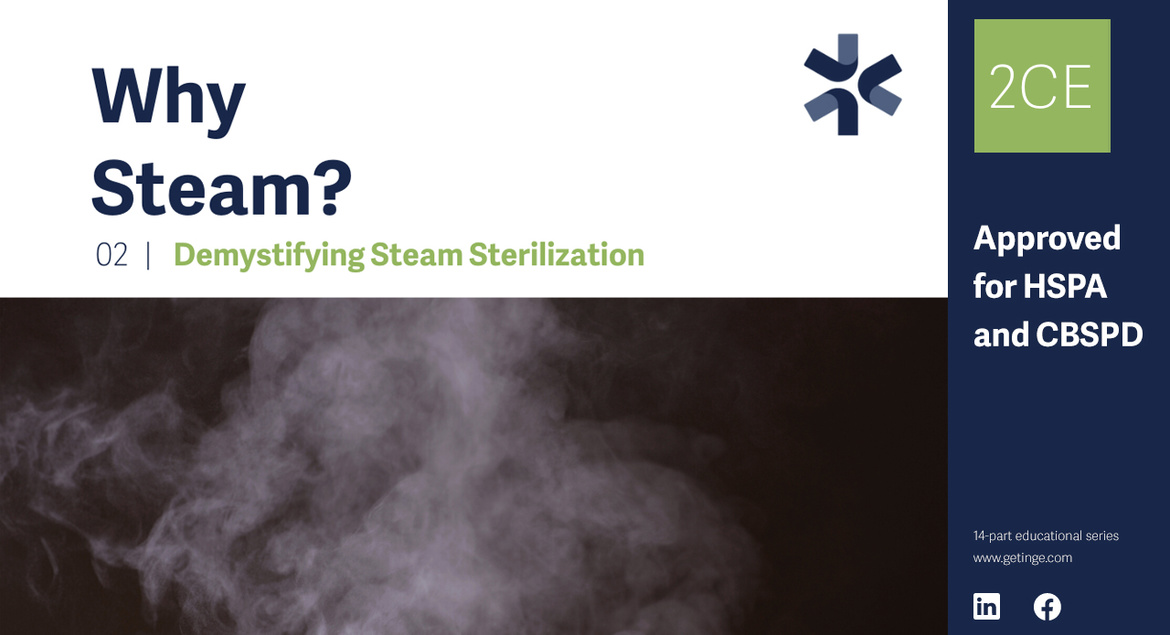Demystify Steam Sterilization - Part 2
Why is steam sterilization such a dominant modality across medical device reprocessing in the hospital setting? Fundamentally it comes down to three primary categories: cost, safety, and dependability.
Steam is very affordable compared to other modern sterilization methods such as ETO and Hydrogen Perioxide gas. When used properly, steam sterilization is safe both for medical devices and for users, since there is no potential exposure to harmful sterilant chemicals. Finally, a well maintained steam autoclave can remain in use for many years, sometimes decades, while still effectively sterilizing loads.
Steam sterilization itself uses high-pressure steam to kill microorganisms, spores and other pathogens on the surface and internal channels of the device. The process typically involves exposing medical devices to steam at a temperature of anywhere from (250-275°F) for a specific period of time and pressure. The length of time and temperature required will depend on the type of device and the microorganisms present. For example, instruments that are heat-sensitive or have complex geometries may require longer exposure times at lower temperatures to ensure sterilization. All of the specific requirements for device sterilization will be listed in the device manufacturer’s instructions for use (IFU).
